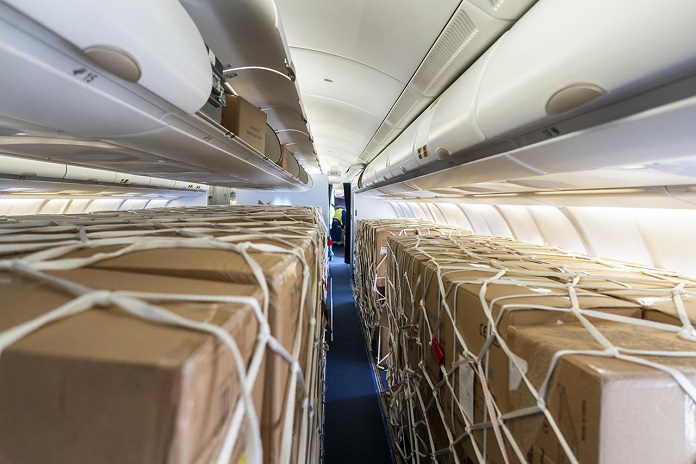The Federal Aviation Administration has extended until the end of the year the exemption for U.S. commercial airlines to carry cargo in the main cabin when passengers are not present, citing an ongoing need to provide extra cargo lift capability while passenger traffic remains below pre-pandemic levels.
The trade group Airlines for America had requested a one-year extension for cargo-in-cabin flights, but the agency said in a Friday ruling that air travel is returning to normal and could soon support necessary freight transportation needs.
The determination to keep the temporary rules for another six months was also influenced by the fact that passenger service has not yet been restored to all communities that depend on it to deliver important goods, the FAA added.
The agency eased rules restricting cargo to the lower deck in May 2020, during the height of the pandemic, because of severe supply chain constraints on medical supplies and other goods caused by the evaporation of passenger travel and airlines grounding fleets. U.S. authorities allowed airlines to store cargo on seats and in storage closets and overhead bins. They later ruled U.S. carriers could remove seats for floor-loading, but none exercised the right (except for an isolated experiment by Delta Air Lines on one aircraft) because of the expense, uncertainty about future demand for long cargo-only flights, and operational challenges.
U.S. and international airlines redeployed hundreds of passenger aircraft to dedicated cargo operations at the start of the pandemic to help shippers with a severe shortfall in capacity and take advantage of elevated pricing that made it profitable to cover costs or turn a profit, operating planes only filled with belly cargo. More than 50% of global capacity rides in passenger bellies.
The auxiliary freighters have about 40% of the capacity of a pure all-cargo aircraft but proved invaluable in helping to maintain global commerce. Carriers quickly innovated to expand capacity by loading light shipments in the cabin and many international carriers have stripped out seats to optimize loads per flight. Carriers like United Airlines (NASDAQ: UAL) are selective about putting freight and mail in the cabin because of the extra labor and time it takes to manually load and unload planes. Last week, Air Canada operated its 10,000th cargo-only flight since the pandemic.
FAA conditions for cabin cargo include a weight limit of 50 pounds per seat and 20 pounds per space under a seat, extra fire extinguishers, at least two trained crew members riding in the cabin who are able to extinguish a fire before it can become a hazard, and an empty row in twin-aisle planes to allow access to both sides.
Global air cargo capacity remains about 20% below pre-crisis levels and international passenger traffic is down by 85%, but U.S. domestic travel has completely recovered this summer. Airlines continue to return aircraft to service but have been unable to fully meet demand because of challenges reinstating furloughed crews. American Airlines in an earnings preview said its second-quarter seat capacity was 24.6% below 2019 levels.









